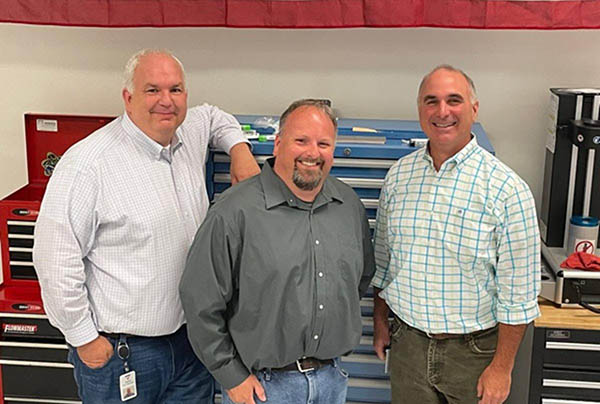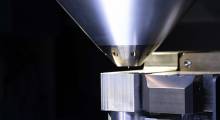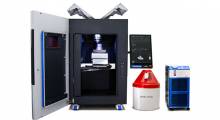VELO3D Inc., which specializes in additive manufacturing for metal parts, today said that Vertex Manufacturing, a provider of CNC machining and manufacturing services from development through production, has chosen it to help meet growing demand for 3D-printed “impossible” metal parts.
“At VELO3D, we help innovators like Vertex accelerate the future of manufacturing, not just for their customers, but to benefit all of humanity,” stated Benny Buller, founder and CEO of VELO3D. “This new partnership speaks to the real and transformational capabilities VELO3D is bringing to metal additive manufacturing.”
Founded in 2014, VELO3D offers fully integrated, patented systems including the Flow print-preparation software, Assure quality-assurance software, and the Sapphire family of laser powder-bed 3D printers. The Campbell, Calif.-based company said it can enable 3D printing of mission-critical metal parts in previously impossible geometries. Its customers include Aerojet Rocketdyne, Chromalloy, Honeywell, LAM Research, and Raytheon Technologies. In March, VELO3D announced plans to merge with JAWS Spitfire Acquisition Corp. and become a public company.
Metal printing pioneers build Vertex
Vertex Manufacturing founders Greg Morris, Steve Rengers, and Tim Warden previously worked at metal printing supplier Morris Technologies Inc. (MTI). They are best known for their work with GE Aviation’s 3D-printed LEAP Engine fuel nozzle used in commercial aviation, said the company.
In an industry with exacting standards for the safety and quality of manufactured parts, the nozzle was one of the first metal additive manufactured (AM) parts to be certified for flight by the U.S. Federal Aviation Administration (FAA).
Morris is also recognized for his early expertise in industrial metals such as titanium and for integrating AM with traditional manufacturing floor systems. MTI was acquired by GE Aviation in 2012.
Morris, Rengers, and Warden then applied their decades of collective experience with thousands of applications across the aerospace, medical, defense, oil and gas, and consumer goods industries to found Vertex.
Where Morris Technologies primarily focused on prototyping use cases, Vertex was created with a mission to help customers who need advanced manufacturing solutions for both development and production problems.
The Cincinnati-based company offers a range of services, including advanced multi-axis CNC machining, AM, rapid castings and final inspection of manufactured parts. Vertex said it is committed to delivering products and services that meet or exceed customers’ quality and schedule requirements. It is AS9100, ISO13485 and ITAR-registered and certified.
“With unique technology providing the capability to create production parts that would be impractical or impossible using other methods, our new additive manufacturing solution from VELO3D means customers will have even more freedom to design and engineer some of the most complex geometries imaginable,” said Morris, CEO of Vertex Manufacturing. “This is the essence of why Steve, Tim and I started Vertex Manufacturing – to help customers leverage the most advanced manufacturing technologies and push the boundaries of what is possible.”
VELO3D Sapphire supports advanced manufacturing
Vertex said it will take delivery of its first full-stack VELO3D Sapphire solution later this month, which will be set up to print metal parts in Inconel 718 (download PDF), a nickel-based superalloy known for its tensile strength when subjected to extreme pressure and heat.
It will be installed alongside other advanced manufacturing systems such as a Makino a61nx CNC machining center. Vertex said it plans to add additional VELO3D systems based on feedback from existing customers about quality, efficiency and productivity benefits.
“The intent is to have this first machine fully operational by the middle of July,” said Morris. “As we move forward, we want to leverage the knowledge and experience our team has in bringing products to market or taking them to production to bring a stronger focus on pursuing production programs, whether it’s traditional manufacturing, advanced metal AM, or a combination of both.”
Article topics
Email Sign Up
















